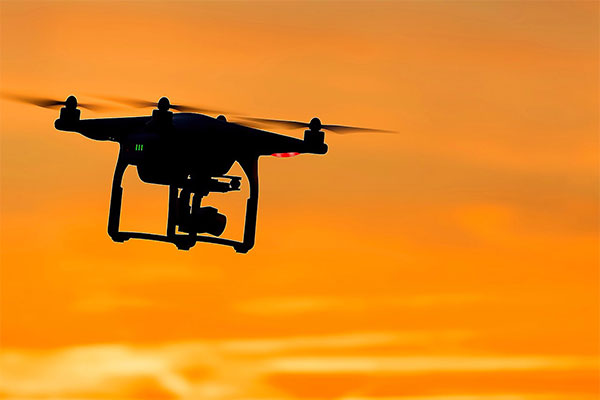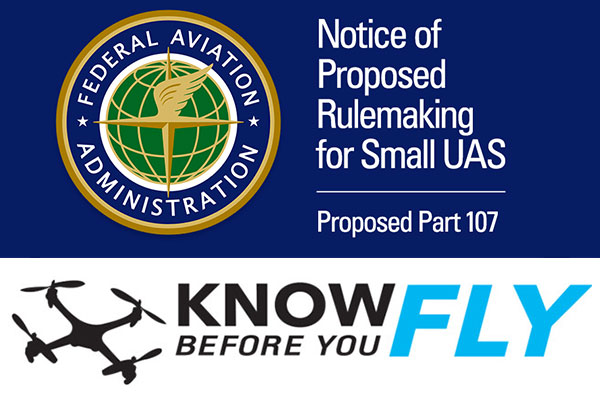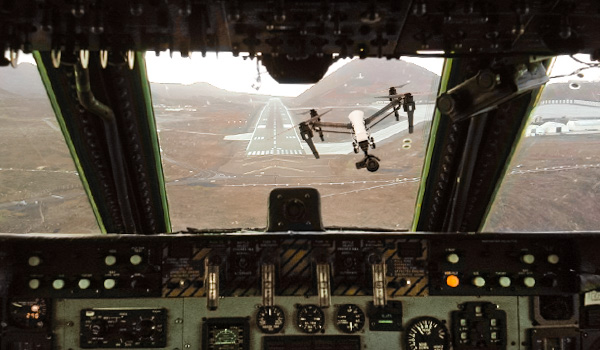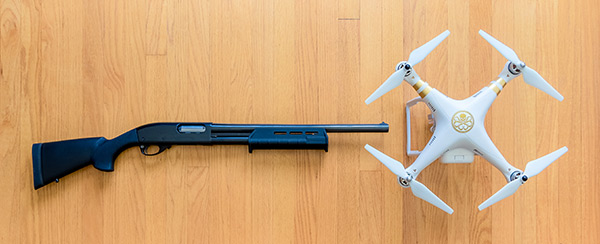
Drones are not only for personal use or nurturing one’s hobby, these amazing high tech flying devices have changed the pace of most industries today. Some argue that the use of these miniature helicopters are just a passing trend, but they’ve actually turned into a key piece of equipment for use in agriculture, weather forecasting, filmmaking, infrastructure management, rescue operations and many more commercial industries.
If you fall into any of these enterprises and are looking for solid reasons to get a UAV for your company, then you’ve come to the right place. Here are some great examples of how drones became a huge asset to the development of Medium and Small Enterprises (MSEs) and large ones too.
Drone-by-delivery Service
Amazon Prime Air just started utilizing this kind of drone technology wherein they deliver a parcel weighing less 5 pounds in 30 minutes or less. This type of service is not regulated by human pilots but has a unique electrical powered drone that flies and lands safely in locations where there are Amazon Prime Development Centers. The tiny aircraft can only fly by day and only in low wind weather conditions. Amazon is also working on improving safety regulations through various free private customer delivery trials and coordinating with policymakers to expand their reach. UPS and NASA are also using this type of drone service.
Single and Fast Transport System
Forget helicopters and private jets, Dubai’s Road and Transportation agency just created drones that can carry one single person weighing up to 100 kilograms for about 30 minutes. This is a game changer for V.I.P.s who need to avoid crowds. The passenger can simply get inside the drone and control it using onboard screens.
Read more →

With unprecedented expediency – the FAA today issued the first FAA/DOT Announce Small UAS Rule, which will take effect in August 2016. As always, they’ve scattered the info about in a very confusing, illogical, and dispersed manner. So, I’ll break it down for you by webpage and I’ll also provide direct downloads of all documents released today (see below!).
Overall, this is a step in the right direction and good for all of us out in the business world. After quickly reading through portions of the rule, I can see that many adjustments are going to be needed. The FAA acknowledges this as “…just our first step” – and rightly so. As capabilities and technology change, well – so must the rules. Without further ado, I give you a bunch of links and 3 downloadable PDF files!
FAA Links Regarding the New Small UAS Rule – FAR Part 107:
- FAA Press Release
- FAA Announcement on Unmanned Aircraft Systems Page
- How to Fly for Work or Business
- Remote Pilot Certification
- sUAS Registration
- Waivers
Downloads:
- Part 107 Summary – 3 pages
- Part 107 Full Text – a ludicrous 624 pages
- Advisory Circular 107-2 – How to Use the Rule
Hope this helps everyone out & happy flying!

I’ve spent many years as a commercial photographer in New York City and have provided a varied array of businesses with photos and video for use in visual marketing and advertising. My goal with each client is to help their particular business build and maintain a strong visual presence on the web and in print by using a style and context that will touch their target audience.
This short article is written from this perspective and is meant to help anyone who is in need of hiring a professional FAA approved commercial drone operator for aerial photography or video – whether it be for business purposes or for personal applications such as a weddings and other events.
How to Hire a Commercial Drone Operator for Photography or Video
- Look at their Portfolio – Before hiring any visual media professional, you should look through their past work and be sure that you like what you see. Why? Well, you can expect that your final results will be very similar. This isn’t a scientific process, it is very subjective. Look over a portfolio and compare it to others. When you find one or more that you like, you’re ready to make contact with the drone photographer or videographer. Remember that just as in regular photography and video, anyone with the money to purchase equipment may run out and start selling you their services. For this reason, there is an enormous variance in the quality and professionalism of the work out in the market and it makes good sense to look over some media before wasting any time communicating with a drone operator.
- Check their FAA Certification – Unlike regular photographers and video professionals, a commercial drone operator must be certified by the Federal Aviation Administration (FAA) to operate legally. The operator must hold paperwork known as an FAA Section 333 Exemption and they must also have a licensed pilot on staff to conduct the drone operation. While it may certainly sound like a bit of overkill to require a real pilot for the operation of a small drone, the FAA’s reasoning is quite simple. Having a licensed pilot present during drone operations insures that the flight(s) conducted are in accordance with all local airspace restrictions. A licensed pilot has something he can lose if he operates illegally or irresponsibly — his license. Hiring an FAA certified drone operator is important in order to help insure that they operate legally and will not expose you or your company to any unnecessary risk or liability. To find out whether the company you’d like to hire holds an FAA certification, just check the complete list of certified companies and individuals here: Authorizations Granted Via Section 333 Exemptions

View from the cockpit of a Lockheed Martin C-5 Galaxy.
Wrong. It is a little more complicated than that.
If you enjoy flying drones, even as a hobby – you’ve unwittingly thrown yourself into the world of aviation. As an aviator, there are certain responsibilities that inherently come with the territory. The moment you lift off and send your drone into the heavens, you become responsible for any damage or injury it may cause to property or people. This includes other aircraft, and is no small responsibility. It is important to understand how your actions can affect the lives of others both in the air and on the ground.
In this post I’ll run through some things drone pilots can do to minimize the risk of having a midair collision with full scale aircraft. I will also provide you with links to some helpful documents and online tools you can use to be a better, more knowledgeable drone pilot. I have flown both drones and normal aircraft which range in size/complexity – from a Cessna 152 to a C-5 Galaxy. Therefore this writing comes from a shared perspective.
How to reduce the risk of midair collisions with full scale aircraft:
Read more →

So another guy decided to take it upon himself to shoot down his neighbor’s Drone. The idiocy behind this Drone shooting has pissed me off enough to write this glorious article. I will begin with an easy to digest list of reasons that will help people unfamiliar with Drones understand why they (probably) aren’t being spied on.
7 Reasons that Drone Isn’t Spying on You:
- You’re much less pretty, handsome, or interesting than your parents led you to believe you are.
- No one is so interested in you that they’d pay someone to spy on you. Most strangers wouldn’t want to spy on you without being paid.
- Drones generally use cameras with wide angle lenses. These lenses are designed to capture landscapes. They capture a big wide view of things, and unless the drone is literally 10-20 feet from you – its user won’t see too much.
- Drones can be seen, heard, and easily detected – making them terrible tools for spying. People who spy on you will not use stark raving white drones, or grey ones, or black ones. Not even green ones. You will not see or hear their equipment. People conducting surveillance generally use quiet, high end DSLR style cameras with expensive zoom lenses that allow them to photograph you from a distance without being detected.
- Most people are just flying their drones for fun as a hobby or pastime. Some are even photographers and video professionals.
- Perverts now have internet porn, so there’s no need to go through the expense and trouble of flying a Drone just to get off.
- Battery life on most Drones is 12-15 minutes. Wasting that precious time spying on you takes away from the fun.
I can rationalize with people all I want, but there are still some folks out there that my reasoning just won’t be good enough for. So let me make some suggestions for Drone pilots and for those concerned about their privacy.
NAY — let me not make suggestions, but provide clear, precise instructions on how to handle things.
Read more →